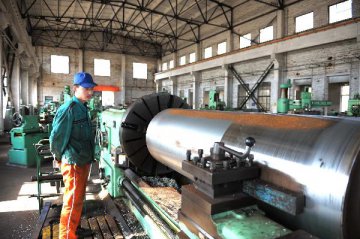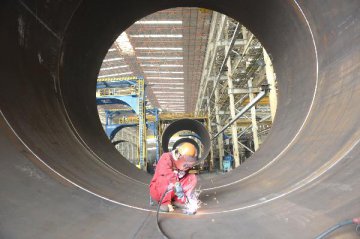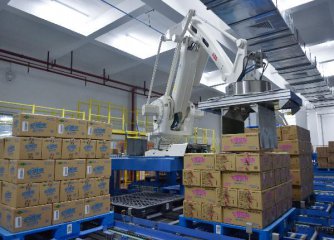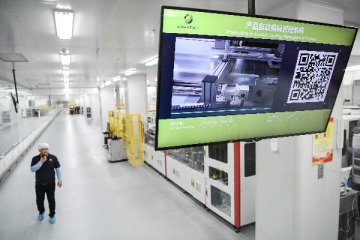
As the first 10-year action plan for Chinese government to implement the strategy of transforming the country into a manufacturer of advanced products, Made in China 2025 has played a significant role in stabilizing industrial growth and beefing up transformation and upgrading of manufacturing industry since it was officially released by the State Council in 2015.
“If continuing to advance Made in China 2025, China should give priority to developing two core and basic industries, namely, new generation of information technology industry and new material industry,” Luo Wen, director of the planning department at the Ministry of Industry and Information Technology (MIIT), said in an interview recently. Specifically, in terms of the former, China should highlight the strategic and guiding industries such as software, integrated circuit (IC), new display, cloud computing, big data, virtual display, green computing, artificial intelligence (AI) and intelligent hardware. As for the latter, the country should focus on making breakthrough in advanced basic material like iron & steel material and petrochemical material, which are urgently needed in some important fields.
Luo introduced that the top-level design has been basically finished and development of innovation capability and basic capability has been improved since Made in China 2025 was carried out two years ago. “In the future, one the one hand, the MIIT will continue to focus on developing intelligent manufacturing and accelerate its integration with Internet; and on the other hand, it will give priority to developing new generation of information technology industry and new material industry so as to enhance strength of basic industry.”
Status quo: 5 major projects have kicked off
MIIT’s vice-minister Xin Guobin recently remarked that two years after the Made in China 2025 was implemented, top-level design has been basically completed, and a policy system, which is led by Made in China 2025, composed of 11 special planning and supplemented by green book about technology roadmap of key fields, is formed.
At present, five projects including implementation guidelines for five projects of setting up innovation center for manufacturing industry, building a more solid foundation for industry development, promoting green manufacturing, and developing high-end equipment, which are put forward in the Made in China 2025, have been kicked off. National innovation center for power battery has been established, and construction of centers for additive manufacturing and industrial robot will start. China has conducted 226 experimental verification and new model application projects about intelligent manufacturing, screened 109 pilot demonstration projects of intelligent manufacturing, and arranged 61 projects under 47 areas of projects of building a more solid foundation for industry development.
“At present, significant symbolic projects are seeing accelerated promotion. The country selected 15 projects including 4G evolution system, flexible and composite robot and key components, and quickened to realize industrialization in 2016. Sound performance and breakthrough progress have been achieved in some significant symbolic projects,” Luo introduced.
According to statistics by the National Business Daily, breakthrough has been made in significant manufacturing industry since the Made in China 2025 was put forward. The first China-made aircraft C919 made a successful trial flight. Success was achieved in the research & development of the first flexible and composite industrial robot. The world’s largest monomer radio telescope was built. The world’s largest gene pool was put into operation.
Planning: formulate investment guideline for key fields
Luo pointed out that high-end equipment, core chips, control system, key material and others, which are needed for industry development currently, mostly depend on imports and have a long way to realize independence. “The government should formulate investment guideline for technical reform of key industries, establish and perfect major project library, and form project reserve mechanism and virtuous circle so as to stabilize industry investment.”
As for the new material industry, the government will focus on making breakthrough in advanced basic material like iron & steel material and petrochemical material, which are urgently needed in some important fields. Progress will be also accomplished in high-end equipment which uses key strategic material like special alloy and high-performance fiber. The government will strengthen superconducting material, nanometer material and graphene to make deployment and research in advance.
In terms of the new generation of information technology industry, China will highlight the strategic and guiding industries such as software, IC, new display, cloud computing, big data, virtual display, green computing, AI and intelligent hardware, and break bottleneck in design and manufacturing of core universal chips to boost the R&D and industrialization development of 5G.
In the opinion of Fu Zhekuan, founder of QF Capital, new material industry is a fundamental industry and boasts huge potential in application. No matter precision electronics products or cups for drinking water cannot do without new material. “Compared with traditional material, technology-intensive new material needs tremendous investment in R&D. So the funding gap is huge. In general, the financing amount of most enterprises ranges from 5 million yuan to 50 million yuan.”
Fu indicated that as China falls behind foreign countries in technology and uses imported products instead, relevant products may embrace great opportunity in the future. “3D printing and fullerene are fruits of innovation in new material, and these new materials are likely to change everyone’s life in the near future.”
The strategy of transforming China into a manufacturer of advanced products was proposed in the Made in Chin 2025, but it won’t be accomplished in one action but by steps, said Huang Qunhui, director of the Institute of Industrial Economics of the Chinese Academy of Social Sciences. “During 2015 and 2017, one the one hand, the government should aim at ten strategic important fields such as new generation of information technology, high-end equipment and new material to lay solid foundation for the high-end manufacturing industry. On the other hand, it should attach importance to the influence of new technologies represented by the new generation of information technology on traditional industries under the background with new round of industrial revolution, and promote the integrated development of Made in China 2025, the Internet Plus action plan, and entrepreneurship and innovation policy.”
Translated by Vanessa Chen
























Latest comments